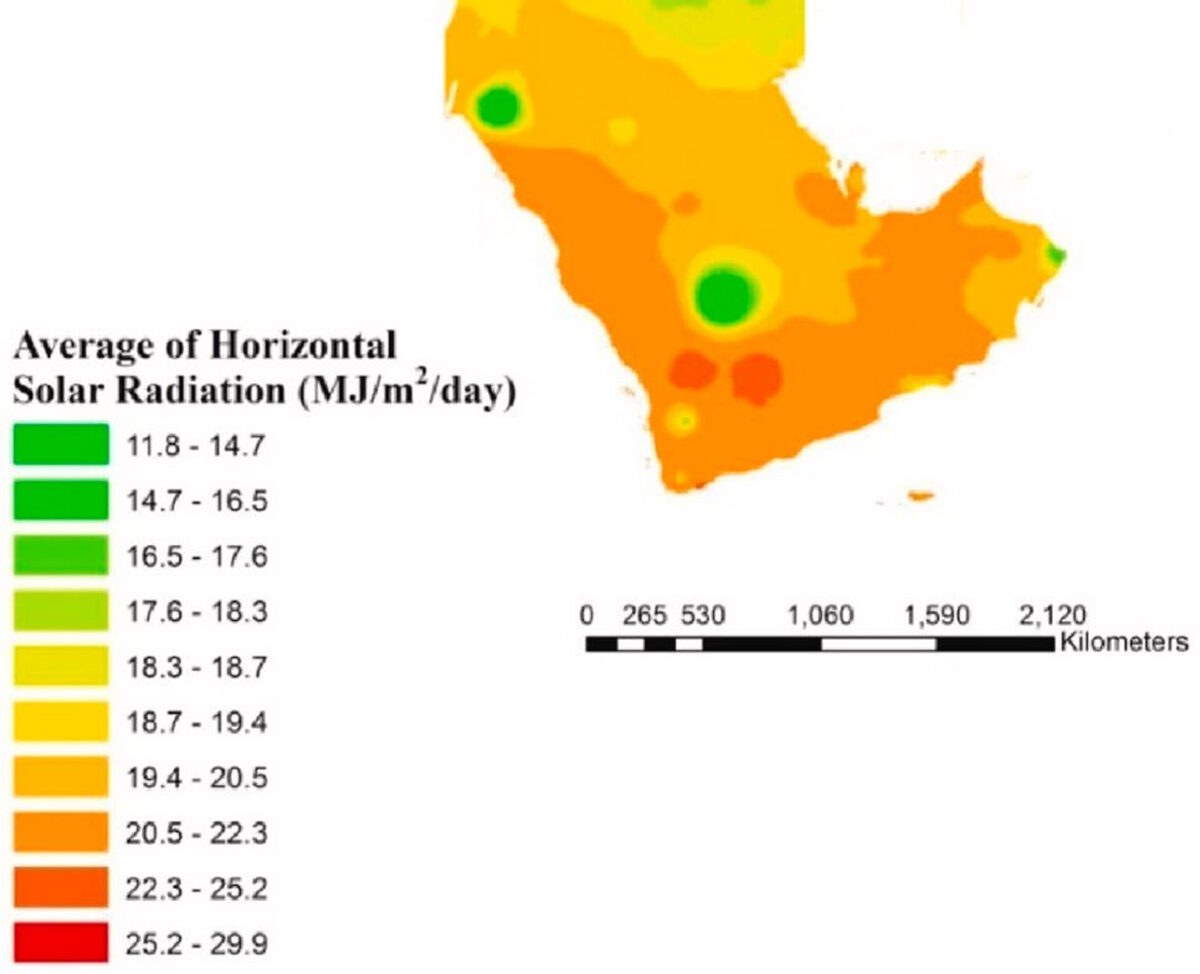An international research team has investigated the economic and technical green energy potential of Saudi Arabia and has found that the country should address a series of structural challenges to become a global hydrogen hub.
The group said Saudi Arabia is moving away from investigation and demonstrations and toward larger-scale development. The researchers estimated the total amount of investments made in green hydrogen thus far at around $900 million. However, they also acknowledged that oil remains the backbone of its energy industry and economy.
“Saudi Arabia’s economy is heavily dependent on the oil and gas sector, accounting for about 50% of its GDP, 70% of government revenue, and 90% of its export earnings,” they said.
The country launched its National Hydrogen Strategy in 2020, with the aim of becoming a major exporter. Its Vision 2030 strategy set a target to generate 50% of the nation’s electricity from renewable energy sources by 2030.
The researchers analyzed the potential of hydrogen in all of its possible forms in Saudi Arabia, including green, blue, grey and turquoise hydrogen technologies. They noted that the current hydrogen strategy bets on blue hydrogen from natural gas with carbon capture and storage (CCS) technology, as well as green hydrogen generated with wind and solar electricity.
“The plan aims to produce 1.2 million tons of green hydrogen and to supply 10% of the global demand for hydrogen by 2030,” they explained. “Furthermore, Saudi Arabia Public Investment Fund (SAPIF) has been investing in several energy projects globally, including a joint venture with Power and Air Products to develop a $5 billion green hydrogen-based ammonia production facility in NEOM, Saudi Arabia. The facility will have a capacity of 1.2 GW and will produce 650 tons of green hydrogen per day.”
One of the key advantages of Saudi Arabia in the hydrogen race is its high solar radiation levels. This, combined with wide land availability, can ensure one of the lowest, if not the lowest, levelized costs of energy (LCOE) for PV in the world.
The scientists identified a series of structural and local challenges that need to be addressed to enable the birth of a hydrogen economy in the country. They cited high capital costs, limited economies of scale, high electrolyzer costs, limited water resources, a lack of incentives, and low demand. They also noted fossil fuel dependency, a lack of regulations and infrastructure, the limited domestic market, and political instability.
“The government needs to develop a comprehensive regulatory framework for green hydrogen production and distribution and invest in the necessary infrastructure to support the industry,” the researchers said, adding that a long-term commitment would be needed to reach this goal. “The infrastructural limitations of green hydrogen production in Saudi Arabia related to transportation, storage, and distribution pose significant challenges that must be addressed for the industry to develop.”
The roadmap outlined by the scientists is structured around six main pillars: creating a stable policy framework, building an infrastructure, setting up an R&D ecosystem, building demand, creating capacity, and supporting cooperation between all players.
If all of these actions materialize, Saudi Arabia could become a hydrogen exporter between 2030 and 2035 and also maximize its green energy potential in the following five-year period.
“The focus should shift to increasing the country exports of green hydrogen, particularly to Asia and Europe,” the academics said. “The government should establish partnerships with countries that are seeking to transition to renewable energy sources, particularly those with a high demand for hydrogen.”
The scientists concluded by saying that Saudi Arabia enjoys an enviable position for green hydrogen in the global energy landscape.
“It is clear that green hydrogen production is a trend that is here to stay, and as the world moves towards decarbonization, Saudi Arabia has an opportunity to become a leader in green hydrogen production and contribute to the global effort to mitigate climate change,” they said.
They presented the roadmap in “Energy futures and green hydrogen production: Is Saudi Arabia trend?“, which was recently published in Results in Engineering. The team included academics from the University of Diyala, Al-Farahidi University, and Al-Turath University College in Iraq, as well as the AGH University of Science and Technology in Poland and Qatar University and the King Fahd University of Petroleum and Minerals in Saudi Arabia.
pv magazine and Solarabic have developed a new event in the Saudi energy landscape – SunRise Arabia Clean Energy Conference 2024 – that combines their long-term market expertise. The event will take place in Riyadh on Jan. 31. One of the event’s sessions will include a discussion about green hydrogen and large-scale electrolysis projects.
This content is protected by copyright and may not be reused. If you want to cooperate with us and would like to reuse some of our content, please contact: editors@pv-magazine.com.









1 comment
By submitting this form you agree to pv magazine using your data for the purposes of publishing your comment.
Your personal data will only be disclosed or otherwise transmitted to third parties for the purposes of spam filtering or if this is necessary for technical maintenance of the website. Any other transfer to third parties will not take place unless this is justified on the basis of applicable data protection regulations or if pv magazine is legally obliged to do so.
You may revoke this consent at any time with effect for the future, in which case your personal data will be deleted immediately. Otherwise, your data will be deleted if pv magazine has processed your request or the purpose of data storage is fulfilled.
Further information on data privacy can be found in our Data Protection Policy.